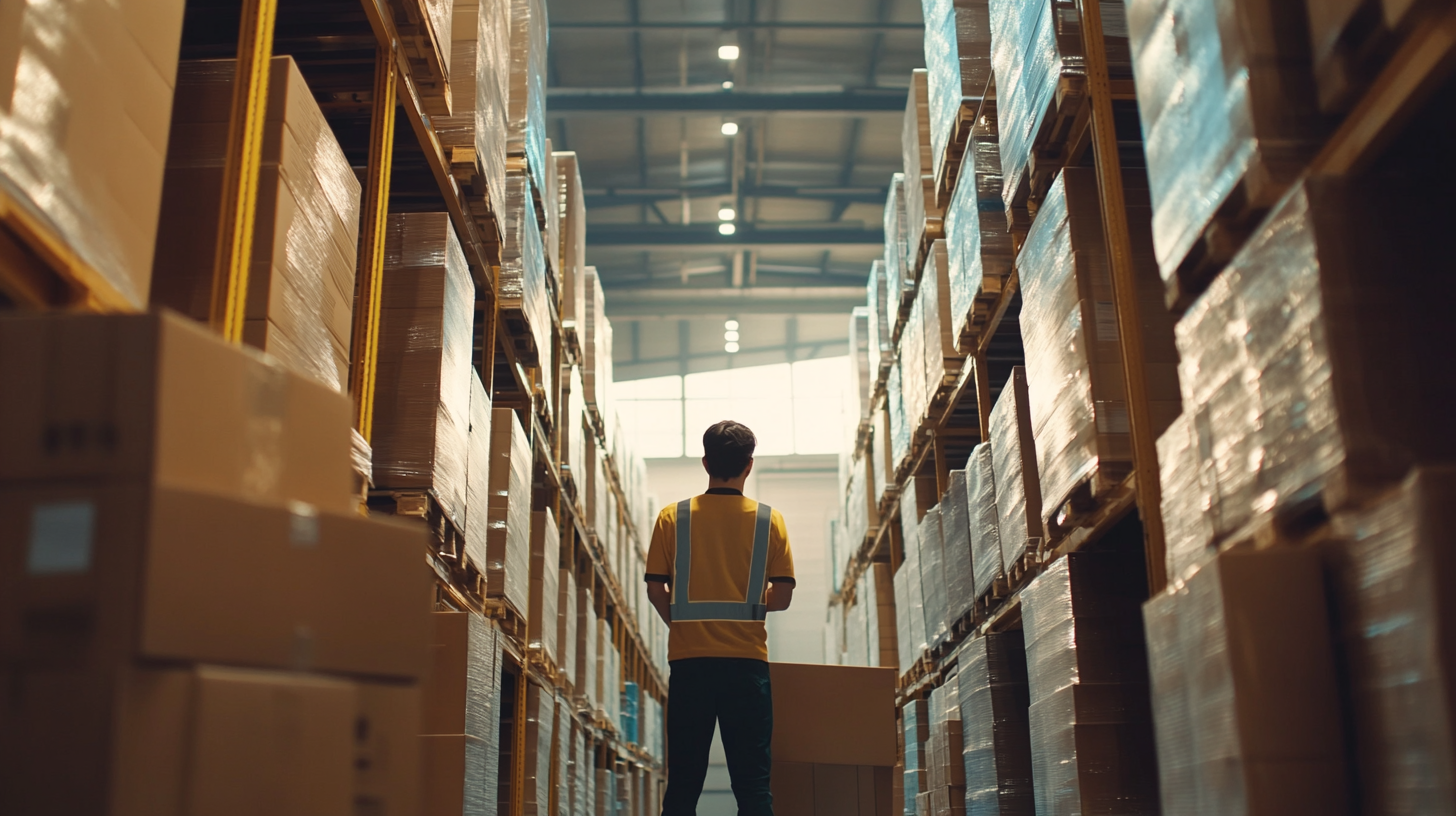In the fast-evolving landscape of global supply chains, logistics providers are at the forefront of innovation, shaping how goods move across borders and markets. As we approach 2025, the demands on logistics providers are increasing, with the need for flexibility, technological integration, and sustainability taking center stage. These innovations are not just enhancing efficiency; they are also redefining the way businesses operate and compete in a world that prioritizes speed and accuracy. Understanding these emerging trends is crucial for companies looking to optimize their supply chain strategies.
For buyers and stakeholders, navigating this transformative era requires a thorough comprehension of the capabilities offered by logistics providers. An essential buyer checklist can serve as a valuable tool to assess potential partners and ensure alignment with strategic objectives. This blog will explore key innovations in logistics, outline the critical factors that buyers should consider, and provide insights into how logistics providers are creating value in global supply chains. As we delve into these changes, it will become clear that the right logistics provider can be a game-changer in achieving operational excellence and meeting customer expectations in an increasingly complex market.

The logistics industry is on the brink of a transformational wave, with innovative technologies poised to revolutionize services by 2025. Key advancements in artificial intelligence, blockchain, and the Internet of Things (IoT) are reshaping how supply chains operate, ensuring greater efficiency and transparency. AI-driven analytics enable logistics providers to optimize routes, reduce costs, and enhance customer experience by predicting demand patterns and managing inventory effectively. As a result, businesses can respond more swiftly to market changes, ultimately driving higher profitability.
Moreover, the rise of blockchain technology is providing unparalleled security and traceability in supply chain transactions. By creating immutable records of every transaction, companies can foster trust among partners and streamline processes such as freight tracking, invoicing, and compliance. This level of visibility not only minimizes risks associated with fraud and errors but also facilitates smoother international trade, making logistics operations more reliable and efficient.
Furthermore, IoT devices are empowering logistics companies to collect real-time data on asset locations and conditions. This capability allows for proactive maintenance of equipment and enhances the overall management of goods in transit. As these technologies continue to evolve, they will not only enhance operational efficiencies but also pave the way for new business models and opportunities in the logistics sector, making 2025 a pivotal year for supply chain innovation.

Sustainability practices are reshaping the landscape of global supply chains, as companies increasingly recognize the imperative to adopt environmentally friendly operations. This shift is particularly relevant within the apparel industry, as highlighted by recent studies on Ethiopian apparel manufacturing. Factors such as resource efficiency and waste reduction play crucial roles in driving sustainable practices, allowing these firms to meet both local and global demand while minimizing their environmental footprint.
Leading companies like IKEA and Schneider Electric are setting benchmarks for greener supply chains by integrating sustainable practices at every stage of their operations. These companies emphasize the importance of not only reducing emissions but also enhancing the overall efficiency of their supply chains. By doing so, they not only improve their competitive edge but also contribute to a broader circular economy that seeks to maximize resource use and minimize waste.
The focus on sustainable supply chains extends beyond merely reducing environmental impact; it also entails creating long-term economic benefits for businesses and communities alike. As logistics providers innovate to incorporate sustainability into their core operations, the emphasis on practices such as sustainable packaging becomes increasingly critical. By adopting these strategies, companies can create a robust framework that supports sustainable growth while maintaining a commitment to environmental stewardship.

Choosing the right logistics provider is crucial for businesses aiming to enhance the efficiency and resilience of their supply chains. As we approach 2025, key metrics will define selection criteria. According to a recent industry report, logistics costs can account for 8-12% of total sales for manufacturing companies, emphasizing the importance of choosing a provider that can optimize these expenses without compromising service quality.
One important metric is the provider's technological capabilities. Innovations such as warehouse automation and AI-driven logistics solutions have been pivotal in streamlining operations. For instance, recent developments in robotic technologies have enabled warehouses to operate with higher efficiency and lower operational costs, which is essential for businesses dealing with the complexities of global supply chains.
Additionally, Evaluating the agility and transformation capacity of logistics providers is necessary as global supply chains face increasing uncertainties. Reports indicate that companies with resilient supply chains recover 50% faster from disruptions. Therefore, selecting providers who have demonstrated resilience in challenging environments and can adapt rapidly to changing market conditions should be a top priority.
Finally, sustainability practices are increasingly becoming a decisive factor in selecting logistics partners. Companies that leverage green logistics not only reduce their environmental footprint but can also lower costs; organizations that implement sustainability in their supply chains often report a 20% reduction in logistics costs. As sustainability becomes a strategic focus, adopting environmentally conscious practices will further distinguish logistics providers in the market.
| Innovation | Description | Key Metrics for Selection | Impact on Supply Chain |
|---|---|---|---|
| Automation & Robotics | Integrating automated systems to enhance warehouse productivity. | Efficiency Rate, Cost Savings | Improved speed and accuracy in order fulfillment. |
| AI & Data Analytics | Using AI to optimize routing and inventory management. | Predictive Accuracy, Decision Speed | Increased visibility and responsiveness to market changes. |
| Blockchain Technology | Enhancing transparency and traceability in supply chains. | Transaction Time, Security Level | Greater trust and reduced fraud risks among partners. |
| Last-Mile Delivery Innovations | Utilizing drones and autonomous vehicles for delivery. | Delivery Speed, Customer Satisfaction | Enhanced customer experience and reduced logistics costs. |
| Sustainability Practices | Adopting eco-friendly logistics solutions. | Carbon Footprint, Compliance Levels | Meeting consumer demand for sustainable practices. |
The last-mile delivery segment is undergoing a transformative shift driven by the continuing surge in e-commerce demand. As reported by industry analysts, the market for last-mile delivery is projected to reach a staggering USD 318.83 billion by 2032, indicating a robust growth trajectory fueled by the increasing need for innovative and efficient delivery solutions. Consumers' preferences are pushing logistics providers to explore alternatives such as pickup points and parcel lockers, which have become essential in meeting the last-mile challenges posed by urbanization and shopping habits.
Autonomous technologies are at the forefront of these innovations, with the Autonomous Last Mile Delivery market expected to hit USD 6.2 billion by 2030, largely driven by the rising utilization of drones and ground robots. These technological advancements are not only enhancing delivery speeds but also improving operational efficiency, particularly in sectors like healthcare where timely delivery of essential goods is critical. As logistics companies embrace automation, they are poised to redefine customer expectations and deliver enhanced service experiences.
Furthermore, the customization and personalization of last-mile delivery solutions are being prioritized, as evidenced by significant growth in the last-mile delivery software market. Such systems empower customers with tailored delivery options, from real-time tracking to flexible delivery windows, ensuring satisfaction in an increasingly competitive marketplace. As we advance towards 2025, these trends will continue to shape the landscape of global supply chains, compelling logistics providers to adapt and innovate swiftly.
This pie chart illustrates the emerging trends in last-mile delivery solutions anticipated to shape global supply chains by 2025. Each segment represents the projected impact of various innovations, helping buyers understand key focus areas for investment and development.
Strategic partnerships are increasingly recognized as a cornerstone of supply chain success in the rapidly evolving global market. As companies grapple with the complexities of modern logistics, the collaboration between entities allows for a pooling of resources, technology, and expertise, thus driving efficiency and innovation. For instance, recent trends highlight how companies that embrace strategic partnerships can enhance their information sharing, flexibility, and resilience across the supply chain.
The integration of innovative technologies plays a critical role in these partnerships, as organizations seek to streamline their operations. For instance, firms are increasingly adopting digital solutions in construction and supply chain management, viewing digitalization not just as an option, but as a necessity for success. This shift underscores the importance of seeking out and establishing partnerships that prioritize technological advancement, enabling firms to remain competitive and responsive to market demands.
Moreover, leading industries, particularly in sectors like automotive, are illustrating the benefits of strategic partnerships for growth. By leveraging shared expertise and data, companies are positioning themselves to navigate challenges more effectively, ultimately achieving higher performance in their supply chains. The evolution of warehouse automation partnerships also reflects this trend; businesses are becoming more selective about partnering with technology providers to enhance their operational capabilities. This careful selection process ensures that partnerships yield the maximum benefits, contributing to overall supply chain success.
This chart illustrates the impact of strategic partnerships on supply chain success metrics, highlighting the expected growth in efficiency and cost savings by 2025.






